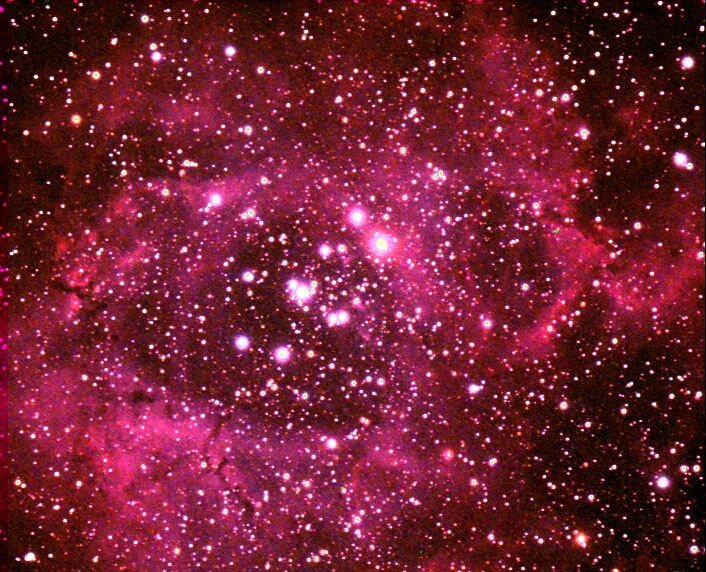| NGC 2237, 2238, 2239, 2246, etc. A portion of The Rosette Nebula in Monoceros (The bright stars are open cluster NGC 2244) |
|
| Main Astronomy Page Image Gallery Main Page Projects Page | |
|
The Rosette is large (this image alone is more than twice the diameter of a full Moon), but quite dim. A number of different sections of the Rosette have been given their own names - sort of like naming the petals of a flower. NGC 2237, 2238, 2239, and 2246 are four such "petals" here. The individual areas were discovered and named before astronomers realized that they were all part of a single nebula. The cluster of hot, young stars at the center is the open cluster NGC 2244. These stars are infants, with an estimated age of less than ten million years. Radiation from this cluster is blowing away the gas and dust in the center, giving the Rosette its flower-like appearance. The dark meandering lines are dust lanes that block the glow from the region beyond them. The color image below is about 75 light years across. |
|
 Below: One of the raw frames used to build up the final image. See the Image Processing page to learn more about this process. | |
February 14-15, 2010 Optics: ED-80 mounted piggyback on a 12" LX200 for tracking/guiding Camera: SBIG ST2000XM/CFW8 Red filter, 2 minute exposure | |